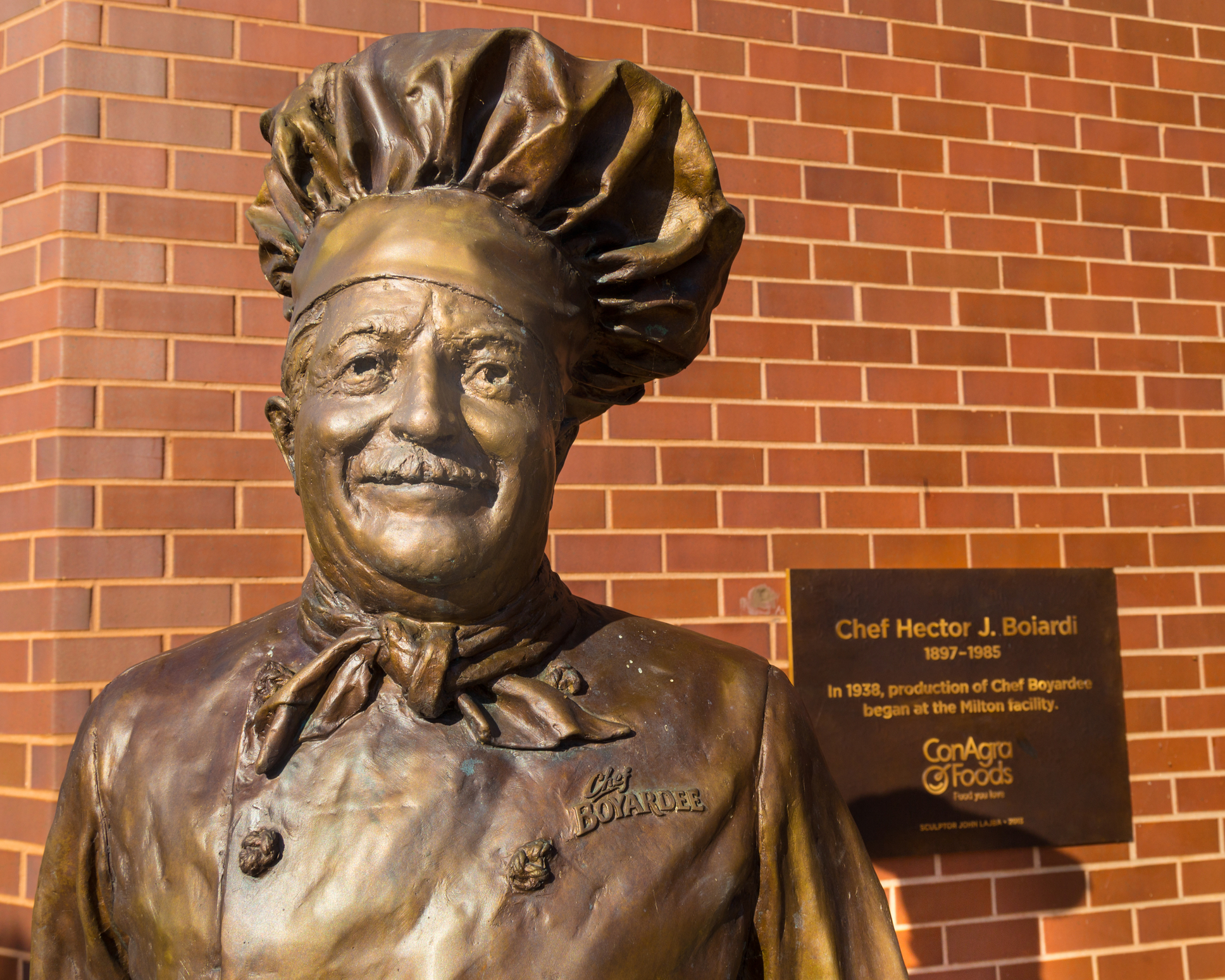Most of you probably know him better as “Chef Boyardee,” the name and face behind a popular brand of Italian style canned foods. Established in 1928 in Cleveland, Ohio, by brothers Ettore, Mario and Paul, “Chef Boyardee” (spelled phonetically to help Americans with the pronunciation of the Italian surname) came to be after customers of Ettore’s restaurants started asking him for portions of his delicious tomato sauce to bring home.
Chef Boyardee’s canned foods fed US troops throughout the Second World War, its plant running 24/7 to produce enough food to keep soldiers’ stomachs full: after the end of the conflict, Ettore received the highest military honor to be conferred to civilians, the Gold Star, for his effort.
If his company – and his face, which graces still today all the brand’s products – is familiar to many, only a minority is probably aware of the real life and story of Ettore, a real person and, most of all, a real chef, who had travelled all the way from Piacenza to New York to make his very own American dream come true.
Ettore Boiardi: a life dedicated to good food
Legend says that Ettore, class 1897, had his first culinary experiences as a toddler, when he would use a wire whisk as a rattle. True or not, by the time he decided to sail to America in 1914, he had already worked for 5 years as a chef apprentice at a local hotel in his hometown of Piacenza.
He reached Ellis Island on the French ship La Lorraine and soon joined his older brother Paul at the prestigious Plaza Hotel of New York city, where he was maitre d’. Within a year, Ettore became the hotel’s head chef. It was at this time he had his first brush with stardom, as he directed the catering for president Woodrow Wilson and his second wife’s Edith wedding reception : it was December 1915. Boiardi kept on working for the President, who sought his help when large parties needed to be catered at the White House; at the end of World War I, Boiardi was even put in charge to organize and prepare a welcome back meal for more than 2000 soldiers.
Far from being content with his New York popularity, Boiardi decided to take over the mid-west and headed for Ohio in 1917. After a bunch of years working as head chef at the Winton Hotel in Cleveland, he decided to go solo and opened his own restaurant, “Il Giardino d’Italia:” it was 1924 and Ettore had just married his wife Helen. Boiardi’s eatery became quickly one of the best renowned in the city, with customers lining up the street to try his irresistible pastas dressed in fresh tomato homemade sauce and cheese.
People loved the dish so much, they began asking how to make it at home. It was the beginning of a new adventure for Chef Boiardi.
Boiardi? Boyardee!
The popularity of “Il Giardino d’Italia” pastas gave Ettore an idea: meal kits with portions of dried pasta, cheese and bottles filled with his very own tomato sauce, along with the instructions to make the perfect plate of pasta, Italian style. Immediately, his take out kits became a hit among patrons, so much so he decided to take the idea to the next level. One of his most faithful customers, Maurice Weiner, owned along with his wife Eva a chain of self service grocery stores, where Boiardi began selling his pasta meal kits: the success was immediate, but people had problem with the too-Italian spelling of the chef’s surname, which thus became, at least on products’ packaging “Boy-ar-dee” to make pronunciation simpler to Anglophones. In 1928, as we said already, Ettore and his two brothers founded “Chef Boyardee,” a food company specialized in the production and commercialization of Italian style ready-to-eat meals.
In 1938, the company moved to Pennsylvania where it is still today. Ettore Boiardi worked as chef and consultant for “Chef Boyardee” for 50 years, retiring only in 1978. He died in 1985, at the age of 87.
The man who made spaghetti a household dish
In spite of the high number of Italian immigrants, Italian food was not particularly known in the US outside native Italians communities in the early decades of the 20th century. This is why the figure and the work of Ettore Boiardi is so essential to the diffusion of Italian cuisine in the US, as well as to the very creation of the amazing flavors of its Italian-American cousin. Boiardi had the huge merit to bring traditional Italian food fare into American homes, making it popular and even teaching his earliest customers how to prepare it properly. Even if today “Chef Boyardee’”s canned food may not represent what culinary experts would define “traditional Italian food,” it remains a brand truly associated with the idea of Italian cuisine, history a beautiful reminder of how the American Dream turned into reality for many Italian Americans.






























